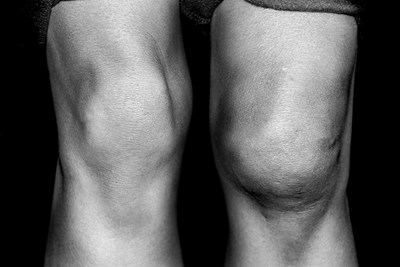If your knee joint is severely damaged due to arthritis or a serious injury, and it’s causing you pain, knee replacement surgery, also referred to as arthroplasty, may be necessary. Knee replacement surgery involves cutting away damaged bone and cartilage from your thigh bone, shin bone, and patella and replacing it with an artificial joint. Here is a look at what the different types of replacement surgeries involve.
Total Knee Replacement
A total knee replacement surgery replaces your joint surfaces at the end of your femur (thigh bone) and at the top of your tibia (shin bone). The surface under your patella (kneecap) can also be replaced with a smooth plastic dome.
More than 90% of knee replacement surgeries are total replacements. It is one of the safest and most effective types of orthopedic surgery, and the majority of patients experience reduced pain and increased mobility and movement following surgery.
Unicompartmental (Partial) Knee Replacement
If arthritis affects one side of your knee, you may be able to have a partial replacement.
This type of surgery typically results in a quicker recovery and better function than other types of knee replacement surgery because it requires less interference. It is less stressful, less painful, and there is less risk of bleeding. However, the outcome depends a lot on the type of arthritis you have.
Partial replacement is an option for patients of all ages, but not everyone is a good candidate for partial knee replacement. If the ligaments within your joint are not healthy or strong enough, you may not be recommended for this type of surgery.
Kneecap Replacement (Patellofemoral Arthroplasty)
If arthritis has only affected parts of the patella (kneecap), it may be possible to replace only the undersurface of the kneecap and its groove called the trochlea. Kneecap replacement surgery is not as a major as other types and has a quicker recovery time. However, it has a higher rate of failure than total knee replacement.
The operation is only suitable for about 1 in 40 people with osteoarthritis. However, the outcome of patella replacement can be good if arthritis doesn’t progress.
Complex or Revision Knee Replacement
If you have:
- Weakness of the main ligaments
- Major deformity of the joint
- Major bone loss due to arthritis or a fracture
You may need a more complex type of knee replacement. These replacements have a longer stem. Due to the longer stem, the component is more securely fixed into your bone cavity. Stability is also better because the components interlock in the middle of the knee, forming a hinge.
This type of knee replacement surgery is needed if you have severe arthritis or if you need a second or third joint replacement in the same knee.



